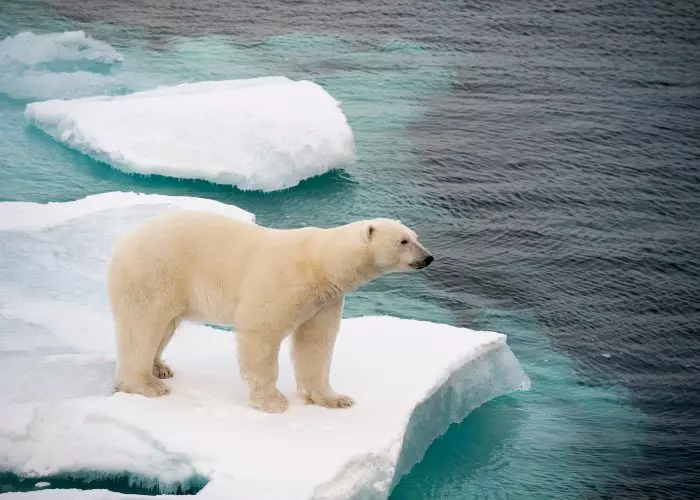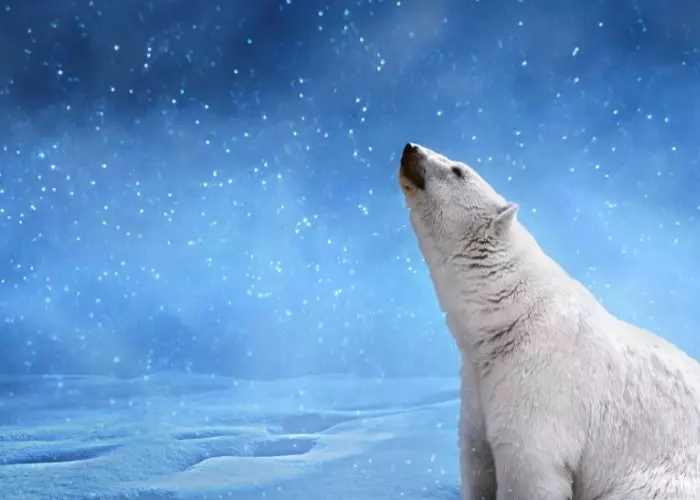Is There Polar Bears in Canada? Canada’s breathtaking and beautiful landscapes and rich biodiversity have captivated the imagination of nature enthusiasts for centuries. Among its most celebrated inhabitants are the awe-inspiring polar bears, symbolizing the country’s wild and untamed spirit.
We seek to uncover the truth behind their existence in Canada’s Arctic realms. Join us as we unveil the secrets of polar bear habitats, examine their population trends, and delve into the remarkable efforts to ensure their survival amidst the challenges posed by a changing world.

Is There Polar Bears in Canada: The Canadian Arctic
Canada’s northern reaches encompass the Arctic, a region that is vital for polar bears. The frozen landscape of the Arctic provides an ideal habitat for these magnificent creatures. With its ice-covered seas, the Arctic serves as a platform for hunting seals, which are the primary food source for polar bears.
Canada is polar bears home. As sea ice diminishes due to climate change, polar bears face increasing challenges in their hunting and breeding patterns. Understanding the unique relationship between polar bears and the Arctic environment is crucial to their conservation in Canada.

Polar Bear Population in Canada
With nearly 15,000 polar bears roaming the Canadian Arctic, Canada plays a crucial role in the conservation of this iconic species. Spanning vast territories like Nunavut, the Northwest Territories, and parts of Northern Quebec and Labrador, the country’s commitment to ongoing research and monitoring allows for adaptive conservation strategies.
As environmental challenges persist, the dedicated efforts to safeguard the future of these magnificent animals become increasingly vital. Canada’s role as a custodian of the polar bear population underscores the global responsibility to protect these majestic creatures and the delicate ecosystems they inhabit.
Conservation Challenges and Efforts
While Canada’s polar bear population may be substantial, the species is not immune to critical challenges. Habitat loss due to climate change, pollution, and rising human-bear encounters stand as significant threats. As ice continues to recede, polar bears endure exhausting journeys in search of food, resulting in reduced reproductive rates.
To combat these perils, conservation organizations are joining forces with Indigenous communities, channeling relentless efforts into research, habitat preservation, and public education on fostering harmonious coexistence with these awe-inspiring creatures. Together, they strive to secure a sustainable future for polar bears amidst an ever-changing world.

Indigenous Perspectives and Stewardship
The invaluable wisdom of Indigenous communities in Canada spans centuries of coexistence with polar bears. Their traditional ecological knowledge and stewardship efforts are paramount to polar bear conservation. To ensure the long-term survival of these magnificent creatures, it is vital to respect Indigenous perspectives.
Also, actively involve them in decision-making processes, and integrate their wisdom into conservation policies. Collaborating with Indigenous communities fosters a holistic approach to preservation, honoring the delicate balance between humans and polar bears, and securing a sustainable future for both species in the Great White North.

Tourism and Responsible Viewing
Drawing travelers worldwide, Canada’s polar bears are a captivating spectacle in their natural environment. Ecotourism can serve as a force for good, raising awareness and bolstering conservation endeavors. However, responsible conduct is paramount. Stringent guidelines are imperative to safeguard both the animals and visitors.
Safe viewing distances and minimal disruption to the bears also are imperative to safeguard lives, Harmonizing responsible tourism with scientific research and community engagement forms the bedrock for fostering a sustainable coexistence between humans and polar bears, preserving the allure of these Arctic icons for generations to come. Read here an article about Coldest Cities in Canada.
Frequently Asked Questions
How do Indigenous communities contribute to polar bear conservation in Canada?
Indigenous communities in Canada hold invaluable traditional ecological knowledge about polar bears and their environment. By actively participating in decision-making and conservation initiatives, they contribute to a holistic approach that respects the delicate balance between humans and polar bears, safeguarding these iconic creatures and their natural habitat for future generations.
What are some of the significant challenges faced by polar bears in Canada?
Polar bears in Canada confront multiple challenges, including habitat loss triggered by climate change, the detrimental effects of pollution, and a rise in human-bear interactions. Addressing these threats is vital to secure a sustainable future for these magnificent Arctic predators in their native Canadian landscapes.
How are conservation organizations working to protect polar bear populations in Canada?
Conservation organizations collaborate closely with Indigenous communities, working hand in hand to protect polar bear populations. Through research initiatives, habitat conservation efforts, and public education campaigns, they aim to safeguard the majestic bears and ensure a harmonious coexistence between humans and these iconic Arctic creatures in Canada.
What are some potential solutions to combat the challenges faced by polar bears in Canada?
Solutions entail reducing carbon emissions to mitigate climate change, implementing stricter waste disposal policies to prevent pollution, and promoting education campaigns for responsible bear-human interactions. By adopting these proactive measures, we can ensure a sustainable future for both polar bears and their delicate Arctic habitat in Canada.
How can tourists contribute to polar bear conservation during their visits to Canada?
Tourists can support polar bear conservation by practicing responsible tourism. Following strict guidelines and rules, like maintaining safe viewing distances and minimizing disturbances, preserves both the animals and visitors’ well-being and fosters a balanced coexistence between humans and polar bears.
Conclusión
Canada undeniably boasts a substantial polar bear population, making it a vital stronghold for these Arctic giants. However, the future of polar bears in Canada depends on our collective efforts to address climate change, mitigate human impacts, and protect their delicate habitat.
Is There Polar Bears in Canada? Yes. By joining forces with Indigenous communities, implementing sustainable conservation practices, and promoting responsible tourism, we can secure a brighter future for the majestic polar bears in the Canadian wilderness and preserve their natural legacy for generations to come.



















